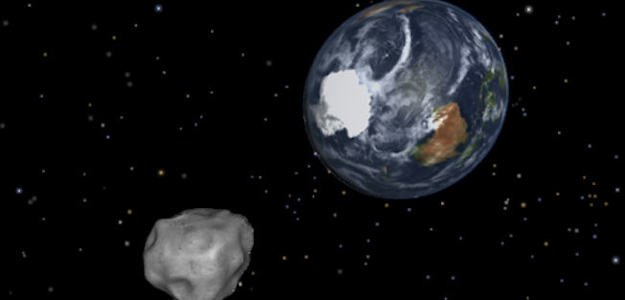 Consider this one small step for technological cowboying, and one giant leap for WTF decision making. According to reports, NASA is working on a plan to “lasso” an asteroid in order to bring it to lunar orbit, allowing for further exploration and experimentation.
Consider this one small step for technological cowboying, and one giant leap for WTF decision making. According to reports, NASA is working on a plan to “lasso” an asteroid in order to bring it to lunar orbit, allowing for further exploration and experimentation.
Bill Nelson, Democratic Senator for Florida and chairman of the Senate science and space subcommittee, revealed the plan at a press conference in Orlando last week, with plans to announce President Barack Obama and the administration’s endorsement to put $100 million into this so-called “accelerated asteroid mission” later this week. Nelson described the NASA plan as “a clever concept.” Although $100 million sounds like a lot of money, the entire project reportedly has no price tag at the moment, which generally translates into “very, very expensive” rather than just clever.
The concept seems surprisingly simple: To begin, NASA plans to send a robotic spaceship into the atmosphere six years from now to capture an asteroid specifically chosen by a team at NASA’s Near Earth Object program. Donald Yeomans, who heads the program – which, in part, monitors asteroids within a certain distance of our planet – likened the process of capturing the asteroid to popping it in a bag with a drawstring. “You bag it,” he said. “You attach the solar propulsion module to de-spin it and bring it back to where you want it.”
Once successfully “bagged,” the asteroid will be escorted back to an area near the moon, where it’ll be held in place for a couple of years before a manned spaceflight. The four astronauts currently on board the Orion space capsule will head out to give it a first-hand inspection, and begin a number of tests to find out more about just what an asteroid is made of, and how it behaves in space.
The aim of the project, Nelson says, is to help NASA develop ways in which we could “nudge away” an asteroid should it come too close to Earth at any point in the future. The project can also aid both NASA and its astronauts in preparing for potential Mars missions in the next couple of decades. Nelson characterized the 2019 portion of the mission as “go find your ideal candidate for an asteroid. Go get it robotically and bring it back.”
According to NASA’s Yeomans, the asteroid in question is expected to be around 25 feet in size and 500 tons in weight; an ideal size because it’ll be big enough to experiment on, but small enough that – should the worst happen, and the asteroid slips out of lunar orbit and starts hurtling towards us – it should burn up entering Earth’s atmosphere instead of doing too much damage. Or, at least that’s what they’re saying in theory.


